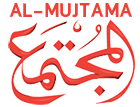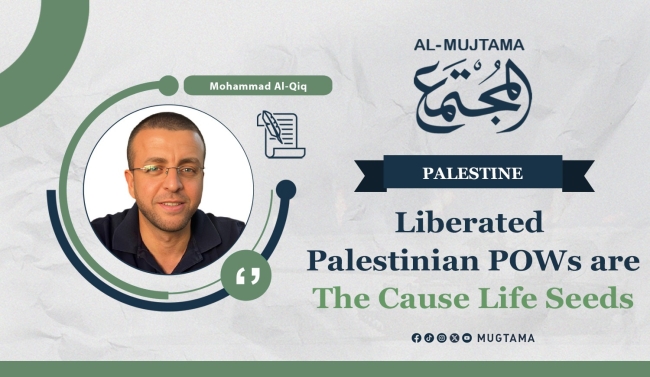The liberation from prison is primarily a great value on a personal level for the prisoner, as his memory has been tumultuous over the years of his captivity, filled with the loss of a loved one, joyful occasions, or a life that his childhood and youth were connected to.
In the prisons of the "Israeli" occupation, there are aspects of life that are killed by the prison administration through various policies. These include solitary confinement, punitive sentences with increased years of imprisonment, separating prisoners with iron barriers, prohibiting education, lectures, and mobilization, and restricting collective prayers to specific times. There is also daily surveillance, raids, humiliating searches, continuous transfers, isolation of influential leaders, assaults on the families of prisoners, and a range of punishments from banning visits to depriving numerous rights, including beatings, and unleashing police dogs on them in the prison sections, as well as systematic starvation, confiscation of televisions, electrical appliances, cleaning supplies, and cutting off water from them.
All of these measures appear to be security practices on the surface, but at their core, they are a psychological war waged against the Palestinian prisoner from the moment their home is invaded until their release from prison, as part of a psychological security program whose main objective is:
Killing the self, spirit, and morale, and linking it to a daily life that is difficult to live with, aims to achieve a psychological deterrent for him from returning to resist the occupation or to create a psychological shock for him throughout his time in prison
Cutting off the intellectual condition and stifling national sentiment within the framework of daily conditioning to the behavior of the jailer and creating an internal mental comparison between medical and humanitarian neglect and cultural and national deprivation, and between the ecstasy and power of the jailer to limit the capabilities of the prisoner and make them regret their decision to rid themselves of the occupation.
Changing the collective mindset of this group, which is considered the spearhead of the Palestinian cause, involves the elite fighters executing field operations, the strategic minds, the politicians directing movements, as well as the student and union movements and social institutions. Through these actions that strip individuals of their connection to their external reality and pressure their psyche, they attempt to succeed in the project of moral defeat, which is the foundation and reason behind the concept of detention.
Lifeboats
The national prisoner movement inside the prisons is considered an important wing in the equation of the homeland; it serves as a lifeboat used by factions to uplift prisoners from the reality designed to destroy their spirits. Over the decades, the prisoner movement has managed to create life and strengthen survival from the grave of the living, which are the prisons, and from the cells of oppression where torture occurs. Prisons have transformed into universities, schools, and systematic mobilization that break the very purpose of their establishment. The historical figures who have left a mark on the homeland are from the prisoner movement, and most of those who changed the course of the struggle against the occupation are released prisoners.
Many people are astonished by this matter in the “Israeli” security corridors, which for a moment thought it had succeeded in neutralizing those considered a danger to the security of the entity—namely, the prisoner leaders. However, all their measures ended up strengthening the Palestinian mentality and spirit of the prisoners. In comparison to the extent of the destruction, brainwashing, disruption, isolation, and conditioning, this is regarded as a strategic psychological security failure for those who devised this grave plan.
The most dangerous suicide operations witnessed during the First Intifada in 1987 were carried out by released prisoners. The most significant historical turning points were recorded by released prisoners, culminating in the Al-Aqsa Intifada, which shocked the military, political, and security levels of the entity, as the leadership of the Intifada and most of the cell members and perpetrators were primarily released prisoners.
Despite the tenfold increase in the number of prisoners, extensive arrest operations, and the persecution and collective punishment of their families through killings, house demolitions, revocation of residency from Jerusalemites, and travel bans on their families, "Israel" has not succeeded in sinking the lifeboats.
The Black Box.
The issue of prisoners is a fundamental concern for Palestinian liberation movements. It relies on three key aspects in this matter, which are:
The work is focused on improving their living conditions inside the prison, which is done by enhancing their ability to make decisions and protest against isolation, food, searches, cultural programs, and more. This is part of a strategy to mobilize and direct efforts to thwart the occupying power's goal of turning the prison into a graveyard for Palestinians.
Attention should be given to the families of the prisoners, including their relatives and the surrounding community, by providing everything necessary for their livelihood, the education of their children, and focusing on compensating for what they have lost due to the absence of the prisoner.
The resistance work of capturing "Israeli" soldiers to free Palestinian prisoners is a strategy and priority adopted by Palestinian resistance movements. They have carried out exchange deals due to the significance of this issue in the overall liberation project for Palestine.
Activating the file of prisoners legally and media-wise on all levels and international forums, highlighting their suffering and steadfastness in the hunger strike battles, and rejecting the moves of the jailers, isolation, and the demand for rights. This is considered a moral, cultural, and historical value for the prisoners that they feel in the prisons. It also enables their voices to reach the world and exposes the crime of occupation against them.
Sinwar
The released prisoners are a fruitful tree spreading throughout the homeland. Everything that is embedded in their captive memories is translated into life in various forms. They are the hidden treasure, making their liberation a task for the resistance at all times, and the goal of the resistance is to revive the spirit within them, where they feel that behind them stands a people and a resistance striving for their freedom. This reflects on their role in the struggle after liberation, as well as on the street, which, when convinced that the resistance has a permanent decision to liberate the prisoners, creates a public opinion that encourages participation in liberation and resistance. This undermines the theory of occupation, which seeks to instill the idea that those who resist will remain captives forever.
The resistance has broken this equation, and there are no longer any standards behind which the entity can hide to prevent liberation. Prisoners from the occupied territories of 1948, from Arab countries, and from Jerusalem, the West Bank, and Gaza Strip have been liberated. The liberators have restored a sense of national spirit to the scene, and this is one of the goals of the resistance: to convey a historical message that those who resist will not close the prison door on themselves.
For the freed prisoners, there is a significant impact after escaping captivity in construction, correcting wrongs, and strengthening willpower. There have been many examples, not least of which is the freed prisoner and martyr Salah Shahada, who contributed to the founding of the Qassam Brigades, and not the last being the mastermind behind "The Flood of Al-Aqsa," the freed prisoner in the 2011 exchange deal, martyr Yahya Sinwar, who spent 21 years in prison. He emerged to renew strength and youth, organize ranks, and issue decisions to bolster the freedom project.
Therefore, the issue of prisoner liberation is considered a graveyard for the "Israeli" taming project, and it is the same as the school of dignity that the resistance has succeeded in establishing. It is crucial and existential for both parties, and the success of either side in this matter means it is getting closer to its goal. The occupation seeks to tame and lead to the death of Palestine, while the resistance seeks to rise up and remove the occupation. Thus, this issue is central and costs everyone exorbitant prices.
In conclusion, and from an on-the-ground perspective, the resistance succeeds in confrontation and opens the black box from all directions. This means repeating the model of construction laid out by martyr liberators and accumulating the steps of liberation for generations that follow and fortify themselves in this manner. This indicates that the occupation’s theory, which it intended to be a deterrent in order to achieve stability and firmness, is breaking down.


